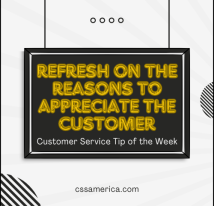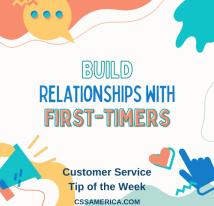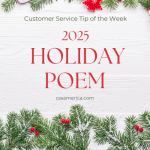
People great at customer service are often responsive and efficient. Not the sexiest words to use, but I’m going to use an EVEN MORE BLAND (How’s that for hype!) word to describe much of what drives responsiveness and efficiency – Organization. Continuously work on your personal organizational skills:
- Save the Trees! Rely less on paper – instead, have soft copies of more/all information – using e-mail, PDFs, One Note, and other tools that can be more easily organized together.
- Add “Virtual” Structure: Organize your files by client or topics or project or initiative. Use subfolders to best refine that structure. Don’t be one of those folks with one e-mail folder – the 30,000 e-mail Inbox!
- Plan Your Work: Plan your weeks at the end of the prior week or first thing that new week. Ensure you have the time to do what you need to do each day to reduce the chance you get behind.
- Work Your Plan: Plan your days at the end of the prior day or first thing that day. Work your top priorities first, and if you did a weekly plan, you won’t have to think about tomorrow until tomorrow.
- Feng Shui Anyone? Make sure your work area is arranged to make it easy to find information, to share information, to quickly get what you need for a client response or a meeting.
- Out with the Old: Purge or archive old files – whether it’s hardcopy or e-mail, the longer you keep old information near the new, the longer it will take you to find what’s truly relevant.
- Quickly In (and out) with the New: When assigned a new quick task or asked for a response, consider doing it right then instead of putting it on a list to do later. This keeps your backlog down and increases your responsiveness.
If you want to be great at customer service, find ways to be more efficient, more responsive, more effective, and even save yourself some time.
Get organized to get better at customer service.
Signup for FREE Tips! Contact Us More Resources for You Visit Our Home Page























